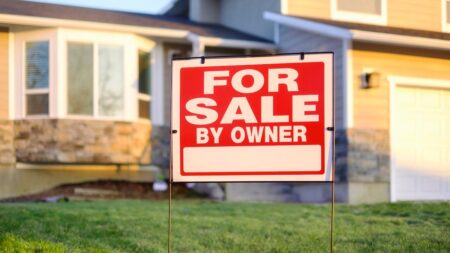Housing market: We have a problem.
There aren’t enough affordable homes out there. While mortgage rates have eased from two-year highs, demand is still outpacing supply. That’s pushing housing prices to new highs and making homeownership unattainable for many Americans.
Vice President Kamala Harris, the Democratic nominee for President, is confronting the issue head-on with a four-year economic plan. Key aspects include the construction of three million housing units, tax incentives for builders of starter homes and $25,000 in down payment assistance for first-time homebuyers.
Not only is the plan ambitious, but it is also refreshing to see a presidential candidate put housing at the center of their economic agenda. However, while more comprehensive than the housing initiatives of her opponent, Donald Trump, Harris’ proposal is not without its challenges.
Build, baby, build
Two of the most significant elements of Harris’ plan focus on housing supply: the creation of new residences for rent and sale over four years and the first-ever tax incentive to build starter homes.
Certainly, the construction of three million homes — the strongest element of her plan — is a solid approach to boosting supply. But it won’t be enough to fully solve the problem. By 2022, the housing shortage had already grown to approximately 4 and a half million.
“Three million puts a dent in that, but your needs continue to increase” as the population does, says David Dworkin, president and CEO of the National Housing Conference, a nonprofit coalition of housing industry leaders. “We have to make an investment in closing this gap.”
One tool to close that gap is Harris’ proposal for a unique tax cut for the construction industry, for building starter homes sold to first-time homebuyers. But it’s not clear who will define what a starter home is. It doesn’t mean the same thing everywhere: It could be a modest single-family home in one market and a townhouse or condo in another.
Builders also have to get on board with this plan. With the cost of land, labor and materials, it’s much more profitable for builders to construct high-end homes than starter homes. Obviously, a tax incentive would be encouraging, but would it be enough of a motivator?
Dissecting down payment assistance
If you’ve ever bought or are trying to buy a home, you know that saving for a down payment is often the biggest challenge. According to Bankrate’s Home Affordability Report, nearly half (42 percent) of U.S. adult aspiring homeowners say they can’t afford down payment and closing costs.
“We have a historic shortage of housing that is unaffordable to the typical worker,” says Dworkin. “It’s not just about low-income housing. It’s about housing people that we work with every day can afford.”
The $25,000 in down payment assistance for first-time homebuyers could be a game-changer, especially for those from disadvantaged backgrounds. It appears that first-generation homebuyers will get even “more generous support,” though we have yet to find out how much that will be.
Many states and cities have their own down payment assistance programs and grants, so it remains to be seen if this type of program will work on the federal level. Or even if it could get implemented: The proposal revisits the Biden administration’s Downpayment Toward Equity Act, which was first presented in 2021 and revived in 2023 — but still remains bogged down in Congress.
All in the timing
What is encouraging, though, is that the plan notes that assistance would be given out after the supply of entry-level homes is addressed, a critical distinction to emphasize. A study from the American Enterprise Institute points out, if you tackled demand before supply, $25,000 in downpayment assistance could increase home prices by $165 billion over four years. With home prices at a record high, eclipsing $400,000, that is an outcome we can’t afford to see.
“I’m not saying that every dollar of that is going to bake into the price of a house, but I think an awful lot of it is,” says Marc Goldwein, senior vice president and senior policy director for the Committee for a Responsible Federal Budget. “If there’s a $25,000 tax credit, most of that $25,000 is going to end up indirectly, in the hands of the seller, through higher prices.”
It’s also unclear how the down payment assistance would be doled out to homebuyers: cash or a tax credit?
“It needs to be carefully targeted so that it’s helping people who really need it,” says Dworkin — and in the most practical way. To that end, he argues “it has to be in the form of direct cash assistance rather than the tax credit because the tax credit cannot be applied at the closing table when down payment assistance is needed.”
Getting past the blueprint stage
Campaign promises are one thing, but execution of those plans is another. As David Garcia, policy director at Up for Growth, a national policy and housing advocacy firm, points out, if Harris is elected, sequencing initiatives like the construction of starter homes and down payment assistance will be critical.
“You can pass a tax credit policy and have it implemented relatively quickly,” he says. “Policies to incentivize increasing the supply of housing are going to naturally lag behind, not by any fault of the policy itself, but just because it does take time for homes to get built. It takes time for developers to access tax credits when we talk about the traditional way affordable housing is built. It could take two to three years, in the best-case scenario, for those homes to end up being built. There needs to be some consideration as to how these two policies — the demand-side policy and the supply-side policy — are rolled out so that they are complimentary.”
Also, the reality is that areas of Harris’ housing plan are beyond presidential control. As Garcia points out, “land use and zoning policies are dictated at the city and state levels.”
Harris’ plans do include a a $40 billion innovation fund to support local governments in their efforts to build housing, doubling on what has already been proposed by the Biden administration. And Harris mentions cutting red tape and streamlining processes to close the housing gap. Still, to put it bluntly: Without strong cooperation from local governments, the target of three million homes may be dead in the water.
And we can’t forget cooperation on the federal level – namely, Congress. The outcome of the November election will show us which party wins control of the House and Senate. If it’s the GOP, that could be a problem: Elements of Harris’ plan, like the $40 billion innovation fund, are unlikely to get Republican support because they are “too expensive,” says Dennis C. Shea, executive director of the J. Ronald Terwilliger Center for Housing Policy at the Bipartisan Policy Institute. He adds that demand-side initiatives like the $25,000 down payment assistance may fail to get GOP backing as well.
Laying the foundation
However, for Americans anxious about housing solutions, all may not be lost. Shea says Congress has a “real appetite” to do something about housing affordability. That means if she’s elected, some of Harris’ supply-side initiatives could gain traction, especially those geared toward the construction industry.
“The bipartisan sweet spot is around supply,” he says. “There’s a lot of bipartisan support for increasing the number of affordable rental homes and the number of starter homes for sale. Those can be achieved through tax incentives to get private investment into this process. I think that’s where the action would be.”
Harris has made it clear that homeownership is “out of reach for far too many families.” While not perfect (or perfected yet), her plan is a step in the right direction to fix that, with elements to please multiple interests and both sides of the Congressional aisle. Even the National Association of Home Builders has cautiously commended her for making housing and affordability a “centerpiece of her economic agenda.” But only time will tell if her proposals can move from promises to progress, laying the foundation for more affordable homes.
Read the full article here
















